Discovering Mongolia: A Journey of Simplicity and Sustainability
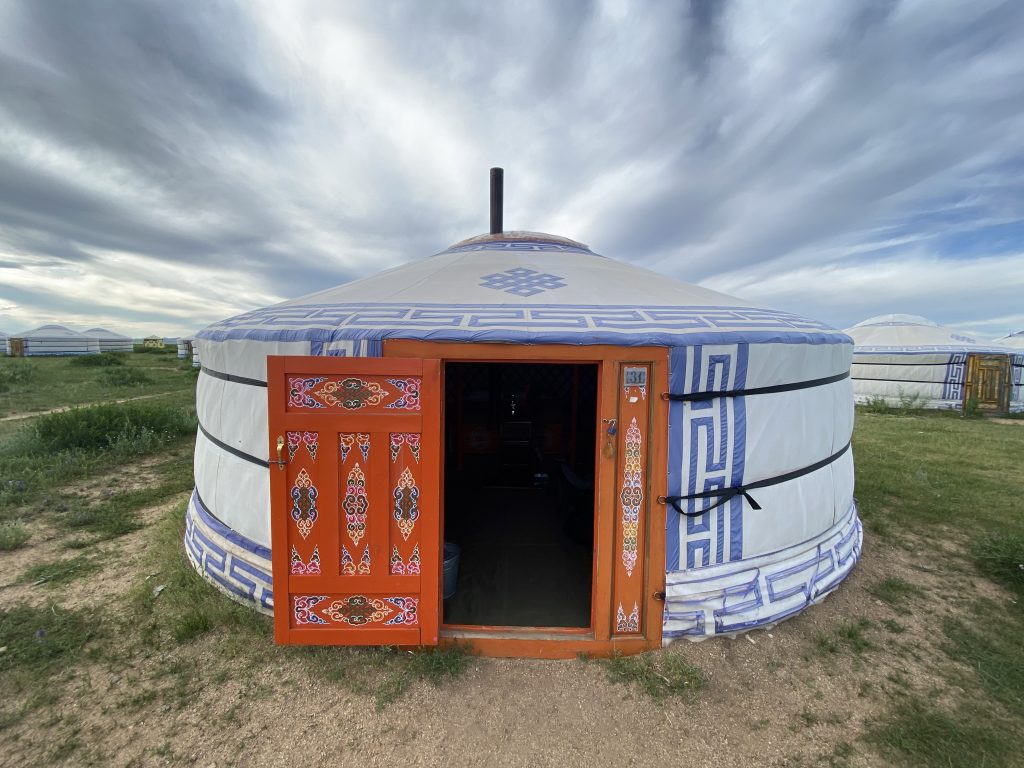
At The Supply Advisory, we regularly post blogs that are either technical in nature or in line with something that is work/workplace related. However, this time around, I’ve chosen to go a bit off-road (Pun Intended) and write about some of my experiences from a Road Trip. While one might argue that it doesn’t add any value to the Supply Chain community, I’d say today, where everyone is running at 200KMPH chasing KPIs/targets/goals, it is rather refreshing to come across a community that lives a simple, content, and sustainable life! So, taking a leaf or two out of their page can only benefit and serve as a cue to stop and breathe every now and then. Hence, I couldn’t resist sharing these experiences with you.
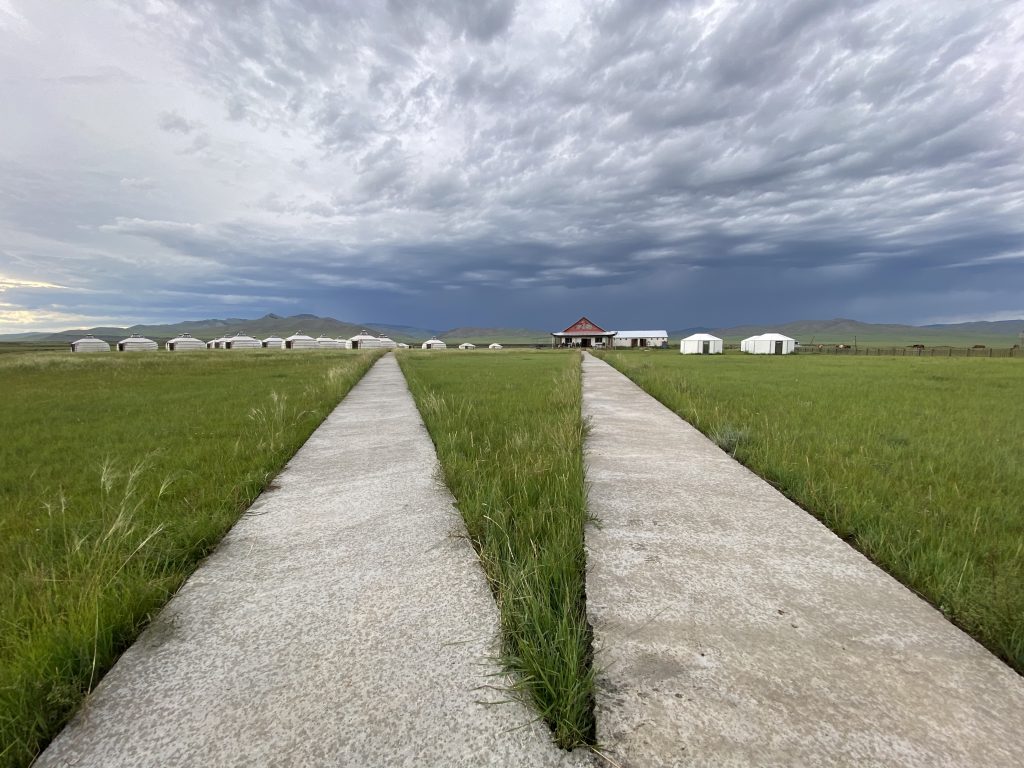
Introduction: My Family’s Captivating Journey through Mongolia
My husband and I were bitten by the travel bug very early in our lives and have figured that our love for road trips will never cease. Good news is that we managed to introduce our twins (6Yo) to this travel bug when they were merely 20 months old and braved a 21-day road trip in Turkey. Since then, there has been no looking back.
This year, I had this strong urge to explore Mongolia! A destination that had intrigued me for years. What was more, I sold the idea to my husband, sorted the travel plans and we were on our way to Mongolia for the Kids Summer Holidays. A 17-day nomadic adventure covering the South and Central Region including Living with a Nomadic Family for a few days.
Little did we know that this adventure would reshape our perspectives and leave an indelible mark on our hearts. In this blog, I’m sharing our experiences which acted as a sound reminder of how it lies with us to define contentment in life.
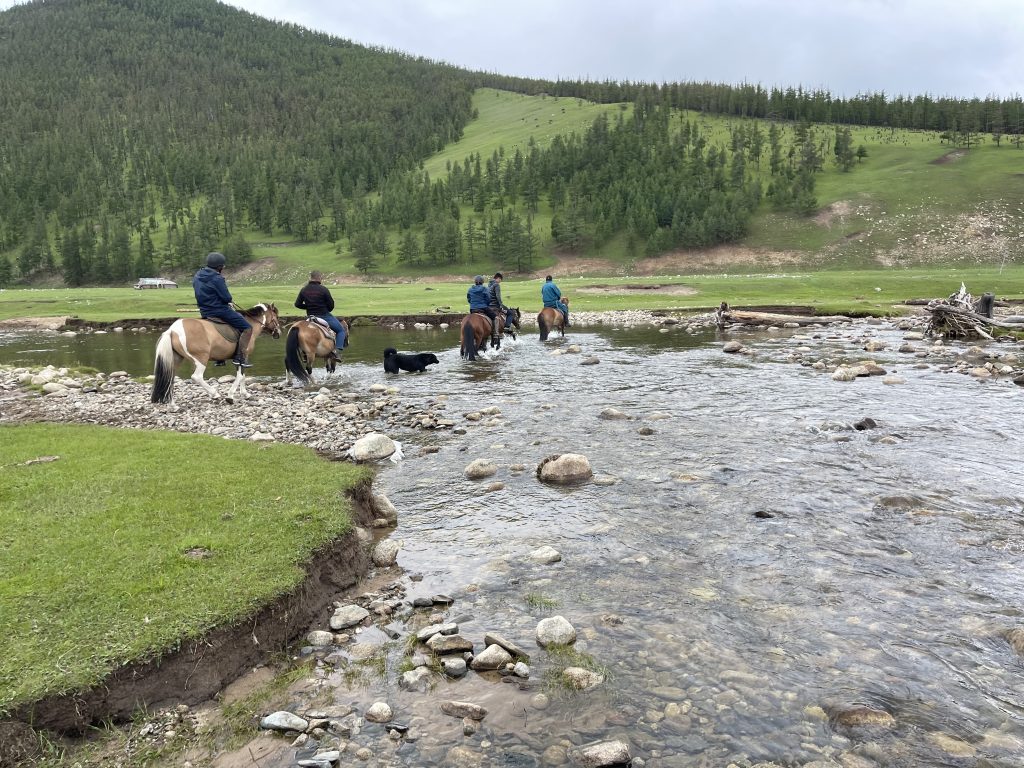
Embracing the Nomadic Lifestyle
With a population of around 3.3 million, Mongolia is a land where the nomadic way of life has thrived for centuries. Despite the challenges posed by nature’s extremes and the modern world’s encroachments, Mongolians have perfected the art of living in harmony with their surroundings. In the heart of this country, we discovered a people who find happiness and contentment in the simplest of things, a stark contrast to our own consumer-driven society.
Urban Pulsations and Nomadic Rhythms
Amidst the vast Mongolian steppes lies Ulaanbaatar, a bustling city that stands in striking contrast to the serene nomadic lifestyle. About half of the country’s population lives here. Here, the fast-paced urban rhythm interlaces with the ancient nomadic traditions, showcasing the country’s diverse cultural fabric. The juxtaposition between urbanity and nomadism reveals the intricate balance between ancient heritage and contemporary progress that defines Mongolia. However, in this article, my focus is going to be on the countryside and nomadic living which formed the majority of our trip.
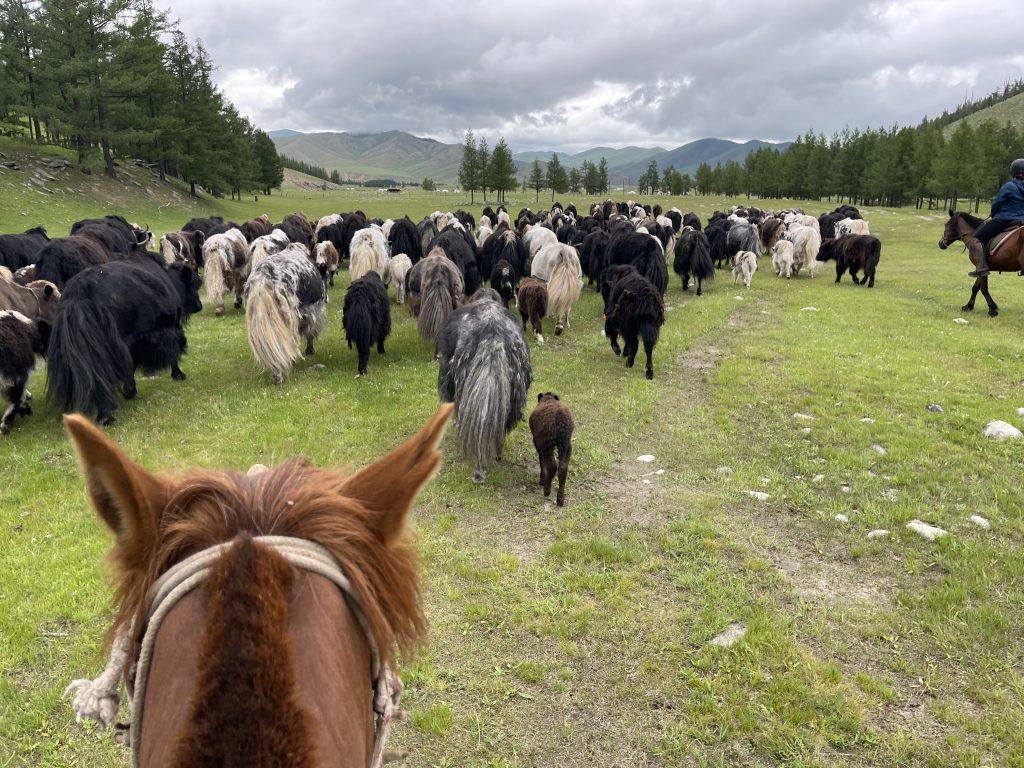
Nomadic Symbiosis with Nature
Nomadic life revolves around the rhythm of raising livestock on Mongolia’s vast steppes. Tavan khoshuu mal or five types of livestock form the basis of Mongolian traditional nomadic economy: horse, camel, cow, sheep and goat . These animals are not just a means of livelihood but a part of the nomads’ identity and sustenance. They are not fed by the herders but rather left free in their natural habitat. The nomads move with the changing seasons, ensuring their herds have access to fresh pastures. The relationship between nomads and nature is marked by balance and respect, reflecting their deep-seated beliefs.
During my family’s trip to Mongolia, I was struck by the remarkable sustainability of their lifestyle. Despite having few material possessions, the Mongolian Nomads exude happiness and contentment. In a world driven by consumerism, witnessing their genuine smiles and warm hospitality made me question our own definitions of success and happiness. They find joy in the open landscapes, the bonds of family and community, and the simple pleasures of life. We stayed with Khulguu, his wife Ireenee and their beautiful family in the lap of Orkhon Valley by the Orkhon River which offered serene yet stunning views. The memories we built there will last us a lifetime.
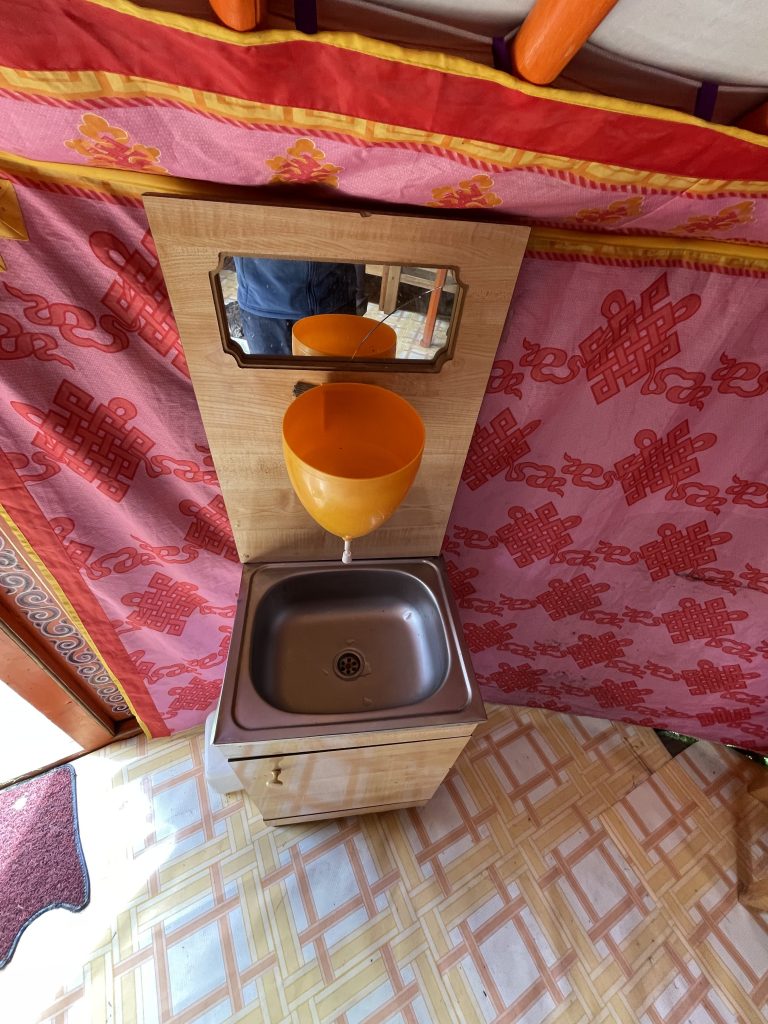
Now, speaking about sustainability, the “Farm to Table” experience couldn’t have gotten any better. This family were Yak, Sheep and Horse herders. Every morning they’d milk the Yak, boil the milk, and use it for the day’s consumption, or they’d make a variety of dairy products in one of the Gers which they’d sell during Spring. The water they used was fetched on a need basis from the flowing river and the Meat they ate was from their own herd. Interesting though, that as a practice they don’t eat baby animals. Instead, they only slaughter full-grown animals as their philosophy is not to waste lives unnecessarily and that also favoured growth of their livestock. Another learning was that the nomads don’t name their Livestock. Be it the Camel herder we met at the Gobi or our hosts in the valley, none did; reason being someday they might have to consume the animal and hence, refrained from such attachment.
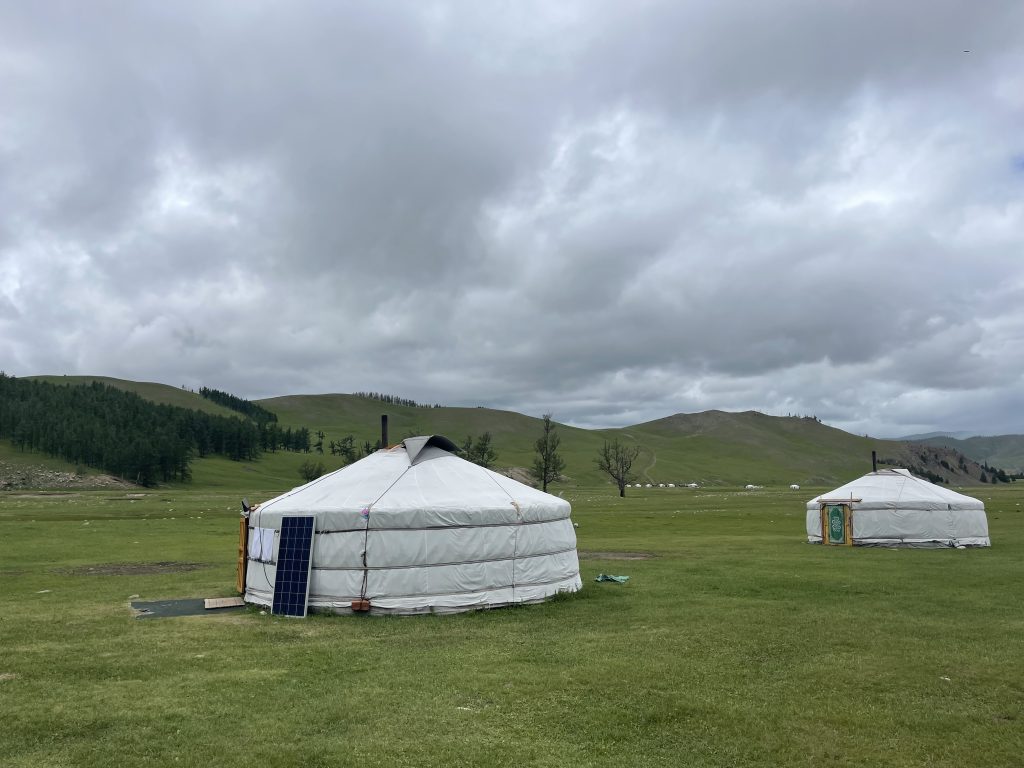
Of all the sustainable living practices that I mentioned above, my “Wow!” moment came from seeing Khulguu-Ireenee’s Ger have a Solar Panel! The good part was though they have harsh winters (up to around -40 Degree C), they have enough sunlight to reap the benefits of the solar panel.
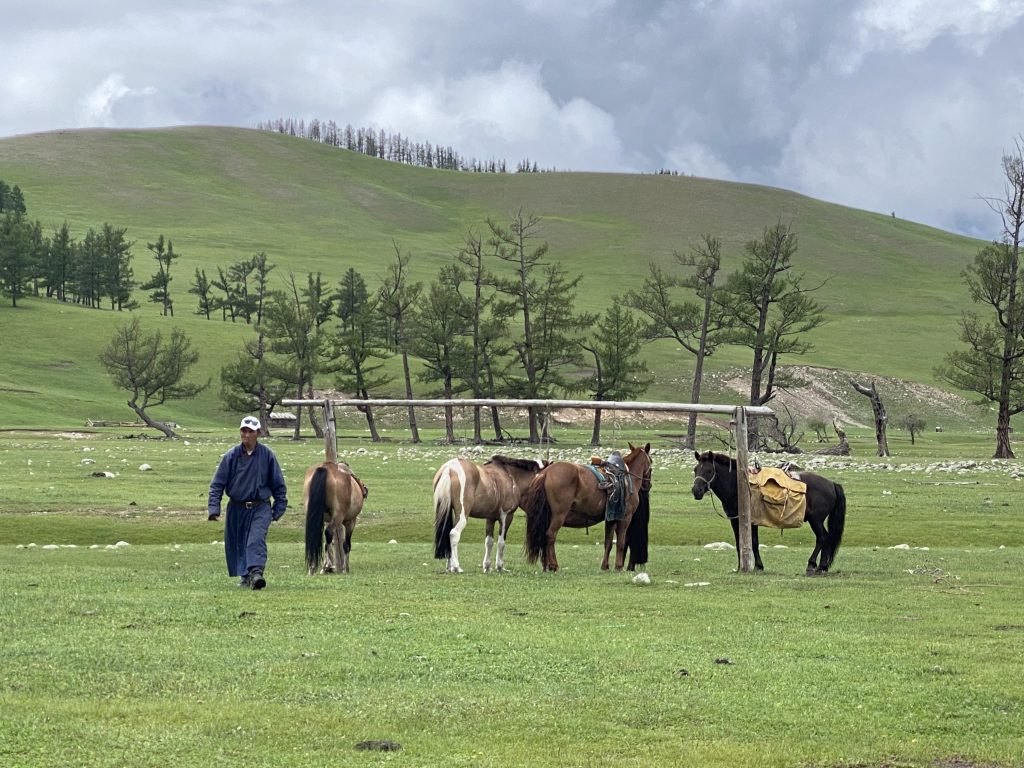
When it came to transportation, short errand runs were made on Horse backs. Horses continue to be deeply interwoven into the fabric of nomadic life, symbolizing practicality, and cultural significance. We had the rare and exciting opportunity of joining our hosts in herding their Yaks on horseback from the hills. These majestic creatures persist in offering transportation, sustenance, and companionship, encapsulating the essence of the nomadic lifestyle. In Mongolia’s deserts, camels also play a pivotal role, showcasing the nomads’ adaptability to diverse landscapes.
We didn’t speak Mongolian and they didn’t speak English, but it was amazing how that didn’t come in the way of our communication. Made me wonder about all the barriers humans unnecessarily create.
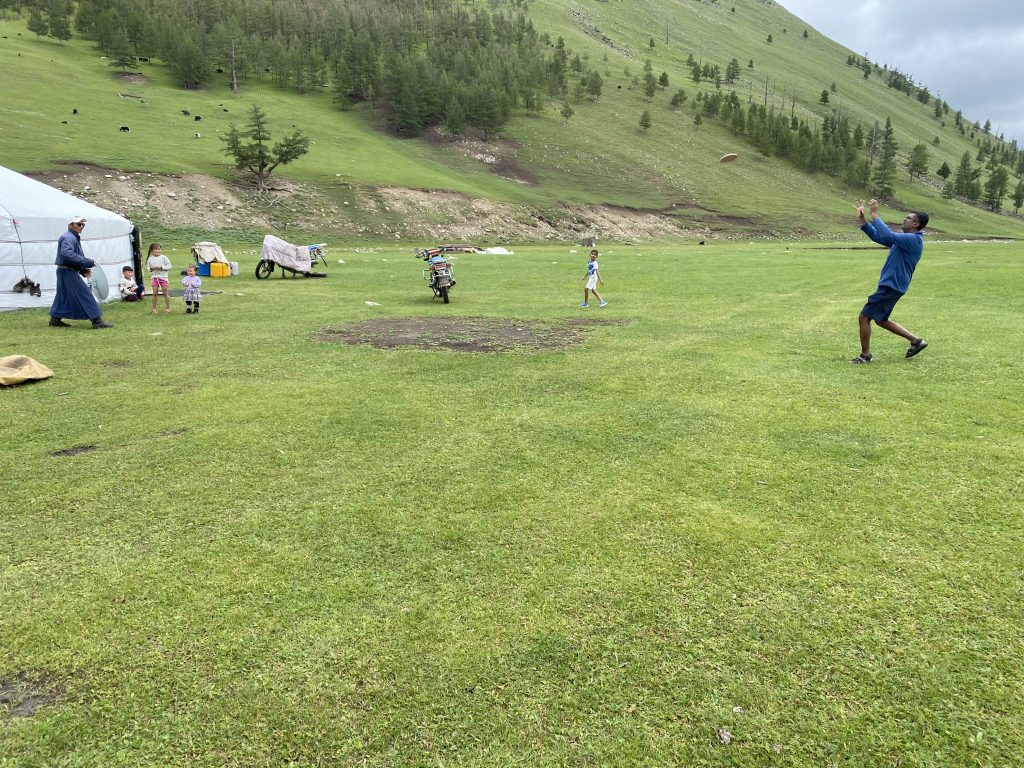
Shared Joy and Celebrations
Khulguu-Ireenee’s children and grandchildren were at the camp too as it was their summer vacation. It was refreshing to see children’s education, despite its challenges, remains a priority for Mongolian Nomadic families. Even in the most rural areas, children make the arduous journey to school, sometimes traversing great distances. Alternatively, they use the school’s boarding facility or live with one of their relatives who have settled in the town/city.
Their kids being home set in huge excitement for my twins. They didn’t speak each other’s language but that didn’t stop them from playing together from dawn to dusk. Oh! It was such a heartening sight. The absence of conventional toys was replaced by the joy of riding horses and creating imaginative games from natural resources, such as crafting playthings from sticks found in the vicinity. A particularly fascinating pastime involves a game using sheep ankle bones arranged on a rug – Quite an intriguing game showcasing their resourcefulness in creating entertainment from the materials at hand.
During our stay, we introduced our host and family to Frisbee, an activity that transported them to a world beyond their vast horizons. The enthusiasm that radiated from their faces was a powerful reminder of the universal language of play and the joy it brings across cultures.
One of the most humbling experiences was celebrating my birthday with the nomadic family which left an eternal mark on me. Their resourcefulness shone brightly as they crafted a unique cake using cookies and melted chocolate, replacing the conventional bakery treats that were distant in miles. All their friends and relatives from the nearby camp joined in the celebration. It felt like I was visiting my Grandparents home during the summer holidays along with my aunties, uncles and cousins. This experience encapsulated the essence of their culture — making the most of what they have, fostering a sense of unity, and finding joy in shared moments.
Our journey led us through the awe-inspiring Mongolian desert, an adventure that was 90% off-road, creating a thrill that captivated my children’s spirits. The challenges we faced, from unexpected downpour in Gobi to leaks in the traditional “ger” [tent], underscored the resilience of nomads. The ger, more than a mere shelter, is their constant companion and symbolizes their unwavering connection to their land.
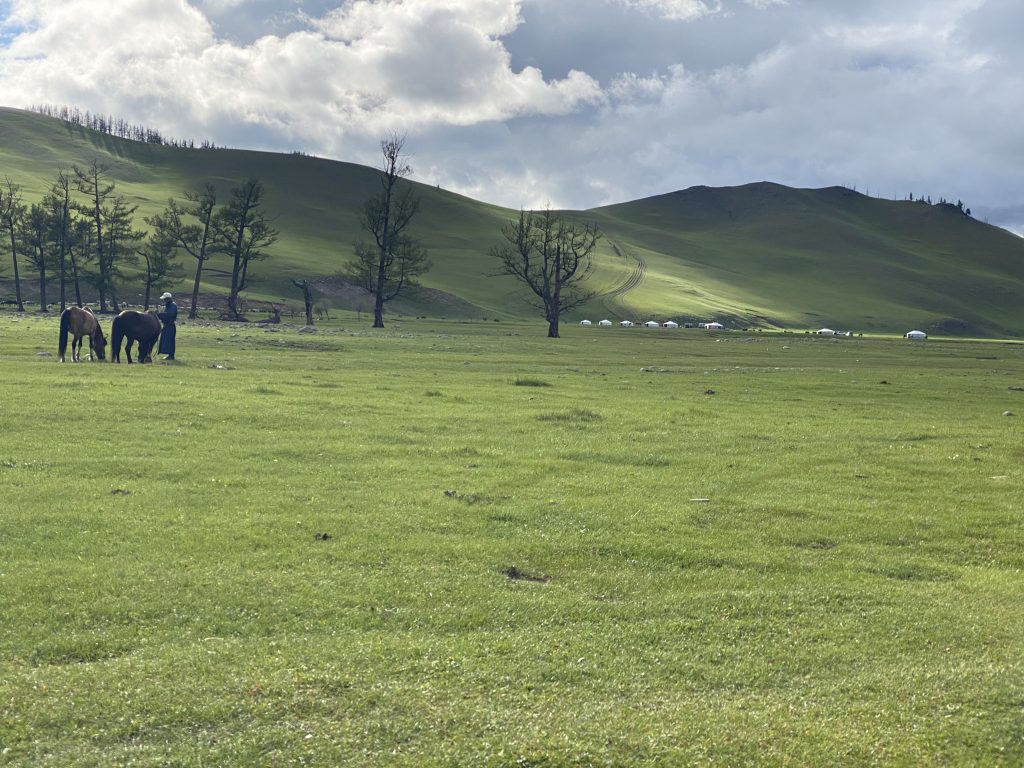
Conclusion: A Profound Exploration of Culture’s Core
Our family’s trip to Mongolia was more than just a vacation; it was a profound exploration of the essence of a culture. As our journey came to an end, the lessons of sustainability and contentment lingered. The Mongolian Nomadic way of life exemplifies adaptability in adversity, finding happiness in simplicity, and nurturing a harmonious bond with nature.
Now, am I going to quit all materialistic pleasures, leave my business and lead a nomadic life? Of course, Not! However, I’m going to take this experience as a reminder and be less hard on myself when I’m running after the revenues, take things in stride, and accept that it is alright to take that moment to breathe and appreciate what I have. Will I always succeed? I don’t know; but, at least, I’ll try! The trip will forever inspire me to seek happiness in the intangible and to embrace the profound joy that arises from the heart of a life well-lived.

Ananya Sinha Roy is the Director at The Supply Advisory, a leading executive recruitment firm specialising in Procurement & Supply Chain.
You can view the The Supply Advisory website or contact them directly at info@supplyadvisory.com for a more detailed discussion.